SAGE Veterinary Centers

E-Learning Portal

SAGE E-learning courses are done in partnership with Easygenerator.
To take a course, you must have a SAGE/Easygenerator account.
To sign up for a free account, simply click on the link of the course you want to take and click Sign Up.
Please only use your SAGE email.
If you already have an account, click on the link of the course you want to take and log in.
Full Course List
Assessment of the Critically Ill Patient - 1 CE Credit
Kristin Freitas, BS, RVT, VTS(ECC)
Learn what goes into creating and executing a well-structured monitoring plan.
Gain knowledge of normal monitoring parameters.
Learn about abnormal values when monitoring critically ill patients.
Explore actions you can take.
1 CE Credit
Histories That Rock - 1 CE Credit
Kim Adams, BS, RVT
By the end of this course, you will be able to:
Build trust and rapport with clients
Efficiently collect relevant patient history information
Condense the acquired information using approved medical terminology and abbreviations
Record patient history in the medical record in a concise and professional manner
1 CE Credit
Low Stress Handling Module 2: Environmental Awareness - 1 CE Credit
Kristin Freitas, BS, RVT, VTS(ECC)
Learn what goes into creating and executing a well-structured monitoring plan.
Gain knowledge of normal monitoring parameters.
Learn about abnormal values when monitoring critically ill patients.
Explore actions you can take.
1 CE Credit
CPR in Accordance with RECOVER Guidelines - 1 CE credit for Doctors and Technicians
Kim Adams, RVT
By the end of this course, you will be able to:
Define what RECOVER means and why the guidelines are important
Identify the two main types of arrest
Understand how to deliver quality chest compressions based on patient species and size
Understand how to deliver quality respiratory support
Identify and use appropriate monitoring equipment during CPA
1 CE Credit
Safety Module 1: PPE and Infection Control
This course will review various examples of PPE and when to employ them throughout a hospital setting.
Safety Module 2: Zoonosis Safety
This course will cover zoonotic illnesses you may encounter while working in companion animal medicine.
Blood Product Transfusions in Dogs and Cats - 1 CE Credit
Pharmacology Knowhow for the Veterinary Technician - 1 CE Credit
Kristin Freitas, BS, RVT, VTS(ECC)
By the end of this course, veterinary Technicians will understand pharmacology principles and be able to apply those principles to safely administer medications to patients.
Pharmacology for Veterinary Technicians: Medications that Act in the Nervous System - 1 CE Credit
Kristin Freitas, BS, RVT, VTS(ECC)
By the end of this course, Veterinary Technicians will understand how medications that act in the nervous system function and their potential side effects.
Triage: Prioritizing Patients - 1 CE Credit
Kim Adams, BS, RVT
Kristin Freitas, BS, RVT, VTS(ECC)
By the end of this course, you will be able to:
Define what triage means
Understand why triage is important
Prioritize patients based on symptoms at presentation using a 3-tier triage system
Pharmacology for Veterinary Technicians: Medications that Treat the Cardiovascular system - 1 CE Credit for Technicians
Kristin Freitas, BS, RVT, VTS (ECC)
Veterinary Technicians will be able to identify drugs that work in the cardiovascular system and describe specific drug side effects.
Antimicrobial Stewardship and the Impact on Our Daily Practice -1 CE Credit for Doctors and Technicians
Catherine Rivara, DVM, MS, DACVIM
The goal of this course is to better understand the AVMA policy in regard to antibiotic stewardship, our roles as veterinarians, and the impact on One Health.
We will discuss the core principles and how they affect our decisions in our daily practice.
Set-Up and Care of An Isolation Patient - 1 CE Credit for Technicians
Kim Adams, BS, RVT
This course will provide a review of illnesses including which diseases are known to be zoonotic, proper set up and maintenance of an isolation space for contagious patients, and how to care for patients with a variety of common contagious illnesses.
Getting to Know You: An Introduction to Endoscopy - 1 CE Credit for Technicians
Samantha Broman, RVT
This course covers the basics of endoscopy. It includes an introduction to the different types of scope and when they may be utilized.
The course provides an overview of preparing the scopes for use in a procedure. It also highlights the importance of obtaining images during procedures.
Surgical Safety Checklists - 1 CE Credit for Doctors & Technicians
Sharon Ullman, DVM, DACVS
This course will ensure an understanding of why surgical safety checklists improve surgical outcomes and how specifically to employ the current SAGE surgical safety check list and surgical patient laterality and patient prep protocols.
Going Beyond the Quick and Dirty Crossmatch - 1 CE Credit for Doctors and Technicians
Yvonne Brandenburg, BS, RVT, VTS (SAIM)
This course covers the importance of performing blood typing and crossmatches prior to blood transfusions.
The course reviews the pros and cons of manual crossmatches, crossmatch kits, slide crossmatch tests, and reviews how to perform these tests.
Low Stress Handling Module 1: Interpreting Animal Behavior and Approaching Your Patient - 1 CE Credit
Kim Adams, BS, RVT
By the end of this course, you will be able to identify:
What low stress handling means
Signs of fear in our patients
The physiological effects of fear
How to correctly approach a patient
Habituation and counter-conditioning, and how to use them in a clinical application
1 CE Credit
Setting Boundaries in Veterinary Medicine: Why Your Wellbeing Depends On It - 1 CE Credit for Doctor and Technicians
Chelsey Nisbet, MSW, ASW
Creating boundaries can seem overwhelming or tricky. With clear communication, practice, and preparation, it can be done.
Research shows the most compassionate people are those who have clear boundaries about what they are willing and not willing to do. Multiple strategies will be offered on setting boundaries and responding to people and situations that cross those boundaries.
Self-sacrifice for the sake of the profession is not sustainable, and the first step toward thriving at work is to set some boundaries – take this course to learn how
1 CE Credit
A Technician's' Guide to Managing the Diabetic Ketoacidosis Patient - 1 CE Credit for Technicians and Doctors
This course covers Diabetic Ketoacidosis (DKA) and what veterinary technicians need to know when treating these patients. This course will discuss treatments, nursing skills, and client communication for managing patients with DKA
Anesthesia Bootcamp Part 1: Machines and Monitors - 1 CE Credit for Doctors and Technicians
Kris Kruse-Elliott, DVM, Ph.D., DACVAA
This course is designed for small animal technicians and DVMs who are interested in improving their understanding of anesthesia machines and monitors.
This will include appropriate circuit selection, machine setup and safety checks, ventilator setup and basics. Basic setup and use of multiparameter anesthesia monitoring equipment will be covered as it relates to use in small animal patients.
Anesthesia Bootcamp Part 2: Safety Checklists for Sage Anesthesia and Basic Troubleshooting - 1 CE Credit for Doctors and Technicians
Kris Kruse-Elliott, DVM, Ph.D., DACVAA
This course is designed for small animal technicians and DVMs who are interested in improving their understanding of anesthesia safety through applied use of safety checklists and basic troubleshooting of common peri-anesthetic problems.
Information will include the why and how of peri-anesthetic and pre-surgical safety checklists with a goal to prevent peri-anesthetic problems.
Included will be basics of normal monitoring and troubleshooting of common abnormalities seen during anesthesia with a logical approach to problem-solving.
Anesthesia Bootcamp Part 3: Basic Pharmacology of Anesthesia Drugs and CRI Basics - 1 CE Credit for Doctors and Technicians
Kris Kruse-Elliott, DVM, Ph.D., DACVAA
This course is designed for small animal technicians and DVMs who are interested in improving their understanding of anesthesia drug pharmacology including common use scenarios, pros and cons of different drugs and anticipated contraindications and complications associated with anesthesia drugs.
Commonly used pre-medications, induction and maintenance drugs and anesthesia support drug use will be discussed.
Low Stress Handling Module 1: Interpreting Animal Behavior and Approaching Your Patient
More Information Coming Soon
Low Stress Handling Module 2: Environmental Awareness
More Information Coming Soon
Low Stress/Fear Free Handling & Restraint
Kim Adams, BS, RVT
This program will provide a variety of behavior-centered restraint techniques for both canine and feline patients.
Setting Boundaries in Veterinary Medicine: Why Your Wellbeing Depends on It
More Information Coming Soon
Safety Module 1: PPE and Infection Control
More Information Coming Soon
Safety Module 2: Zoonosis Safety
More Information Coming Soon
Pharmacology for the Veterinary Technicians: Medications that Act in the Nervous System
More Information Coming Soon
Pharmacology for Veterinary Technicians: Medications that treat the Cardiovascular System
More Information Coming Soon
Pharmacology Knowhow for the Veterinary Technician
More Information Coming Soon
Antimicrobial Stewardship and the Impact on our Daily Practice
More Information Coming Soon
